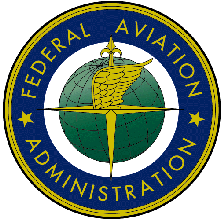Fri, Jan 10, 2003
 The U.S. Department of Transportation's Federal
Aviation Administration (FAA) just announced that El Salvador
complies with international safety standards set by the
International Civil Aviation Organization (ICAO) and has given the
country a Category 1 rating following a reassessment of its civil
aviation authority. El Salvador was previously rated Category
2.
The U.S. Department of Transportation's Federal
Aviation Administration (FAA) just announced that El Salvador
complies with international safety standards set by the
International Civil Aviation Organization (ICAO) and has given the
country a Category 1 rating following a reassessment of its civil
aviation authority. El Salvador was previously rated Category
2.
Inspectors from the FAA Flight Standards International Field
Office, located in Miami, FL, worked closely with the Central
American Aviation Safety Agency in providing technical resources to
help El Salvador take the actions necessary to meet its ICAO
obligations.
This announcement is part of the FAA's International Aviation
Safety Assessment (IASA) program, under which the agency assesses
the civil aviation authorities of all countries with air carriers
that operate to the United States and makes that information
available to the public.
 The
assessments are not an indication of whether individual foreign
carriers are safe or unsafe. Rather, they determine whether or not
foreign civil aviation authorities (CAA) are meeting ICAO safety
standards, not FAA regulations.
The
assessments are not an indication of whether individual foreign
carriers are safe or unsafe. Rather, they determine whether or not
foreign civil aviation authorities (CAA) are meeting ICAO safety
standards, not FAA regulations.
Countries with air carriers that fly to the United States must
adhere to the safety standards of ICAO, the United Nations'
technical agency for aviation that establishes international
standards and recommended practices for aircraft operations and
maintenance.
The FAA, with the cooperation of the host civil aviation
authority, assesses countries with airlines that have operating
rights to or from the United States or have requested such
rights.
Specifically, the FAA determines whether a foreign civil
aviation authority has an adequate infrastructure for international
aviation safety oversight as defined by ICAO standards. The basic
elements that the FAA considers necessary include:
- laws enabling the appropriate government office to adopt
regulations necessary to meet the minimum requirements of
ICAO;
- current regulations that meet those requirements
- procedures to carry out the regulatory requirements
- air carrier certification, routine inspection, and surveillance
programs, and
- organizational and personnel resources to implement and enforce
the above.
The FAA has established two ratings for the status of these
civil aviation authorities at the time of the assessment: (1) does
comply with ICAO standards, (2) does not comply with ICAO
standards.
More News
Aero Linx: Commercial Aviation Safety Team (CAST) Founded in 1997, the Commercial Aviation Safety Team (USCAST) has developed an integrated, data-driven strategy to reduce the comm>[...]
Land And Hold Short Operations Operations that include simultaneous takeoffs and landings and/or simultaneous landings when a landing aircraft is able and is instructed by the cont>[...]
We're Everywhere... Thanks To You! Even with the vast resources and incredibly far-reaching scope of the Aero-News Network, every now and then a story that should be reported on sl>[...]
Pilot’s Inadvertent Use Of The Landing Gear Control Handle Instead Of The Flaps Selector Switch During The Landing Rollout Analysis: The pilot reported that during the landin>[...]
Also: Cosmonaut Kicked Out, Airbus Scales Back, AF Silver Star, Russian A-60 Clobbered A Samaritan’s Purse humanitarian flight was hijacked on Tuesday, December 2, while atte>[...]
 ANN's Daily Aero-Linx (12.12.25)
ANN's Daily Aero-Linx (12.12.25) ANN's Daily Aero-Term (12.12.25): Land And Hold Short Operations
ANN's Daily Aero-Term (12.12.25): Land And Hold Short Operations ANN FAQ: How Do I Become A News Spy?
ANN FAQ: How Do I Become A News Spy? NTSB Final Report: Cirrus Design Corp SF50
NTSB Final Report: Cirrus Design Corp SF50 Airborne 12.08.25: Samaritans Purse Hijack, FAA Med Relief, China Rocket Fail
Airborne 12.08.25: Samaritans Purse Hijack, FAA Med Relief, China Rocket Fail




